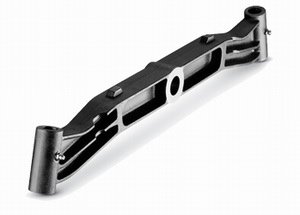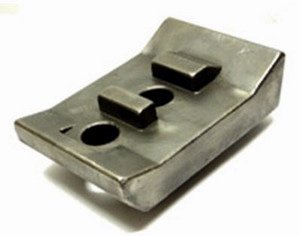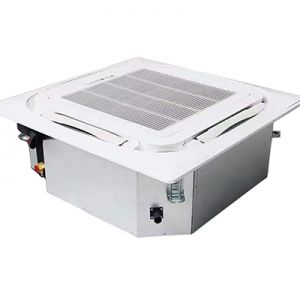When we talk about the comparison of casting and forging, we usually have to explain from the following aspects: What is casting and what is forging? Why use castings and why use forgings? Advantages and disadvantages of castings and forgings. How to choose between casting and forging?
What is casting and what is forging?
- Casting is the process of heating metal to melt. When in a molten or liquid state, pour it into a mold or container to form the desired shape.
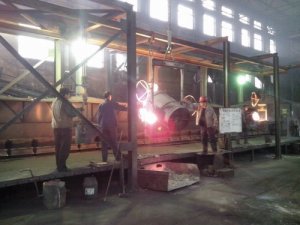
- Forging is a processing method that uses forging machinery to apply pressure to metal blanks. Thus produce plastic deformation to obtain forgings with certain mechanical properties, shapes and sizes.
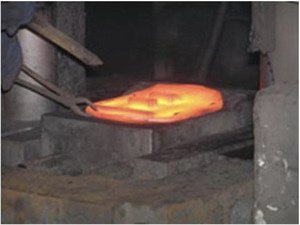
Forging and casting are two completely different manufacturing methods. When casting, the material is heated above its melting temperature, and then poured into a mold to solidify. When forging certain objects, although they are often heated, they are physically pressed into shape while maintaining a solid state.
As an engineer, I have always known that forgings generally have lower surface porosity, finer grain structure, higher tensile strength, better fatigue life/strength and greater ductility than castings.
In other words, forgings are usually more suitable for shackles. The basis of the reason is very simple. When you melt the metal for casting, the grain size can be expanded freely. When it cools back to a solid, the grain structure becomes more curved and more random, reducing its strength.
Why use castings?
The advantages of casting include:
- No practical limit on casting weight
- Multiple alloy options
- Since forgings remain solid, custom alloys are difficult to put into production, and during casting, alloys including chromium, nickel and molybdenum can be added during the melting stage.
- Tooling is usually cheaper than forging dies
- Need for smaller production “runs”
- No problem with complicated/complex parts
Casting advantages and disadvantages
| Advantages of Die Casting, Investment Casting and Sand Casting |
Disadvantages of Casting |
| Higher Tolerances – the metal molding process offers an opportunity for a higher level of detail and meeting of exact specifications. | Structural Integrity – products formed by casting are more porous than forged products. |
| Few Secondary Operations – casting provides a primary product that will require very few secondary machining operations. | Costs – tooling costs are generally higher for die casting than for forging. Tooling costs for other casting methods may vary. |
| Production Rate – once a casting mold is created, the production process can allow for a high production rate. | Process Control – the casting process requires frequent monitoring and inspection to maintain quality and prevent defects. |
For general parts as well as large and complex parts, casting is an excellent manufacturing method.
Why use forgings?
Forging provides uniform composition and structure. Due to thermal cycling and deformation processes, forging leads to metallurgical recrystallization and grain refinement. This enhances the resulting steel product especially in terms of impact and shear strength.
Forged steel is generally stronger and more reliable than cast steel and sheet steel. Because that the grain flow direction of the steel has changed to match the shape of the part.
The advantages of forging include:
- Usually harder than alternatives
- Will handle shocks better than castings
- The nature of forging excludes the occurrence of voids, shrinkage, voids and cold casting problems.
- The compact grain structure of the forging makes its mechanical strength high. No expensive alloys are needed to obtain high-strength components.
- The compact grain structure provides excellent wear resistance without the need to make the product “super hard”. The difference is that HRC 46-50 castings have no ductility to cope with high-impact grinding.
Based on a paper written by a member of the Department of Industrial and Manufacturing Engineering at the University of Toledo. And shared by the Forging Industry Association.
- The tensile strength of forged parts is 26% higher than that of cast parts. This means you can get a stronger shackle with a lower weight.
- The fatigue strength of the forgings is increased by 37%, and the fatigue life is extended by 6 times. This means that fake shackles will last longer.
- Cast iron has only 66% of the yield strength of forged steel. Yield strength is an indicator of the load that the shackle will bear before it begins to deform.
- When pulled to failure, the area of the forging was reduced by 58%. The area of the casting is only reduced by 6%. This means that there will be greater deformation before the forged part fails.
Forging advantages and disadvantages
| Advantages of Forging | Disadvantages of Forging |
| Structural Integrity – development of grain flow through beating of the metal leads to increased product strength and a high level of material predictability. | Tolerance Levels – products formed through forging may not meet requirements for high tolerances. |
| Costs – materials are generally less expensive than the materials required for casting. Limited scrap and rework. Reduced labor costs and lower tooling equipment expenses than casting. | Secondary Operations – many forged products require secondary processes to refine and finish to exact specifications. |
| Reliability – consistent ductility, known yields, and increased strength due to grain development. | Limitations & Defects – forged products may be limited in shape and may include defects from die failure. |
How to choose between casting and forging?
There are many important factors to consider when choosing the best process for producing a product, including:
- Suitable for crafts.
Forging has great limitations on the complexity of the shape. If the part is too complex for forging, then casting will be a better choice.
- Cost considerations.
Castings are usually cheaper than forgings, so if castings can meet the requirements, then castings will be a better choice.
- Processing considerations.
Usually, forgings are simple; it cannot produce complex shapes, so further machining work is required. If you want to reduce processing costs, castings will be your choice.
- Special mechanical properties.
If you need special mechanical properties, such as high hardness, wear resistance, rust resistance, etc., castings will be an easier choice.

